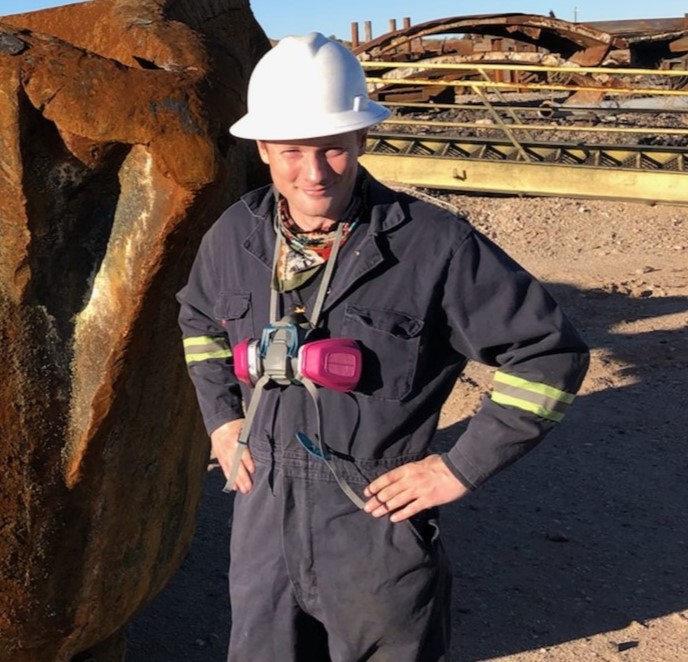
Mineral collecting is a pursuit that transcends mere hobbyism; it’s a passionate quest for beauty, knowledge, and connection with the Earth’s geological heritage. Whether you’re drawn to the sparkling crystals of quartz, the iridescent hues of opal, or the rugged allure of native gold, the world of minerals offers a wealth of wonders waiting to be discovered. This comprehensive guide will delve into the art and science of mineral collecting, providing expert insights, practical tips, and strategies for building an exceptional collection that reflects your unique interests and passions.
Understanding the Fascination
At its core, mineral collecting is driven by an insatiable curiosity about the natural world and a deep appreciation for its geological treasures. Minerals are the crystalline embodiment of Earth’s history, formed through millennia of geological processes and transformations. Each specimen holds a story of ancient oceans, volcanic eruptions, or mountain-building events—a tangible link to our planet’s past.
As a collector, take the time to immerse yourself in the captivating world of mineralogy. Study the diverse mineral species, from common silicates to rare sulfides, and learn to identify their distinguishing characteristics. Understand the geological contexts in which minerals form, from igneous intrusions to sedimentary deposits, and appreciate the intricate beauty of their crystal structures. The more you know about minerals, the more profound your appreciation for their diversity and complexity will become.
Setting Goals and Objectives
Building a mineral collection is a deeply personal endeavor shaped by your interests, aspirations, and curiosities. Before embarking on your collecting journey, take the time to define your goals and objectives. Are you collecting for scientific study, aesthetic enjoyment, or investment potential? Do you have a particular affinity for certain mineral species, geological formations, or geographic regions?
Once you’ve established your objectives, develop a collection plan aligning with your goals. Determine the scope and focus of your collection—whether you’re aiming for breadth or depth—and set criteria for the specimens you wish to acquire. Consider specimen size, quality, rarity, and locality, and be prepared to adapt your collecting strategy as your interests evolve.
Educating Yourself
Knowledge is the key to success in mineral collecting. Arm yourself with a solid understanding of mineralogy, geology, and collecting techniques to enhance your prowess. Delve into books, scientific journals, and online resources to deepen your knowledge of mineral species, their properties, and their geological significance. Engage with the mineral collecting community by joining local clubs, attending mineral shows, and participating in field trips. Exchange ideas, insights, and experiences with fellow collectors, and learn from their expertise and perspectives. Consider enrolling in workshops or courses on mineral identification, specimen preparation, and conservation to hone your skills and broaden your understanding of the hobby.
Exploring Collecting Localities
Exploring collecting localities is where the thrill of mineral collecting truly comes alive. From remote mountain ranges to abandoned mines, the Earth’s crust is teeming with hidden treasures waiting to be unearthed. Research potential collecting sites in your area or regions of interest, and familiarize yourself with local geology and mineralogy.
When planning collecting excursions, prioritize safety, legality, and environmental stewardship. Obtain any necessary permits or permissions before collecting on public or private land, and respect local regulations and restrictions. Equip yourself with essential gear, including rock hammers, chisels, safety goggles, and sturdy footwear, and always exercise caution when exploring unfamiliar terrain.
Selecting and Acquiring Specimens
As you accumulate specimens for your collection, exercise discernment and discernment in your selections. Quality should always take precedence over quantity. Seek specimens exhibiting exceptional aesthetics, well-defined crystal formations, and vibrant colors. When evaluating potential acquisitions, consider factors such as rarity, provenance, and historical significance.
Build relationships with reputable dealers, collectors, and auction houses specializing in minerals. Attend mineral shows and exhibitions to view specimens firsthand and network with fellow enthusiasts. When purchasing specimens, insist on authenticity and documentation, including locality information, collector’s name, and acquisition date. Keep detailed records of your acquisitions to maintain the provenance and value of your collection.
Preserving and Displaying with Care
Proper preservation and display are essential for safeguarding the beauty and integrity of your mineral collection. Store specimens in a clean, dry, and stable environment away from direct sunlight, moisture, and fluctuations in temperature and humidity. Utilize archival-quality display cases, trays, and stands to showcase your specimens while protecting them from dust, scratches, and accidental damage.
Handle specimens carefully, using soft brushes and cloths to clean them gently. Avoid harsh chemicals or abrasive cleaners that can damage their surfaces. Label specimens with accurate locality information and other pertinent details to preserve their provenance and historical context. Rotate specimens periodically to prevent prolonged exposure to light and ensure even wear and tear.
Building an exceptional mineral collection is a discovery, learning, and appreciation journey. By setting clear goals, educating yourself, exploring collecting localities, selecting and acquiring specimens with care, and preserving and displaying them thoughtfully, you can create a collection that reflects your passion for minerals and the natural world. Whether you’re a novice collector or a seasoned enthusiast, the thrill of uncovering Earth’s geological treasures is an experience like no other. Happy collecting!